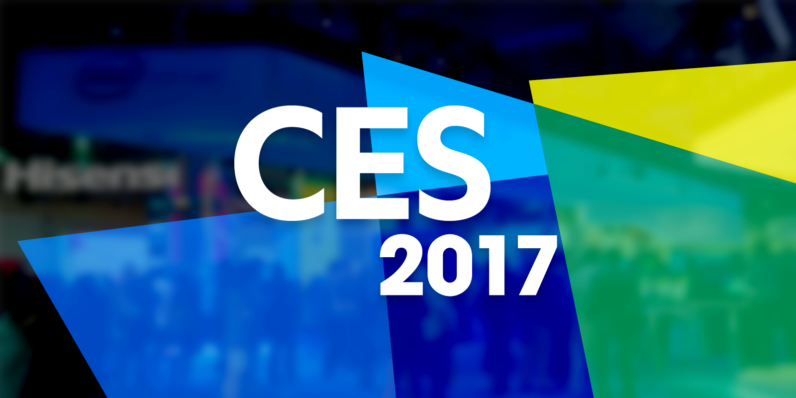Welcome to the Lab’s coverage of the 2017 Consumer Electronics Show, the biggest annual tech trade show that sets the consumer tech trends for the coming year. As with previous years, the Lab has a team on the ground in Las Vegas scouting the show floors to bring you the most noteworthy discoveries and announcements that marketers need to know.
What We Saw At CES
Though the exhibition floors won’t officially open until tomorrow, there have already been a number of high-profile announcements coming out in the Virtual Reality and Augmented Reality arena.
On the headset front, Lenovo unveiled its first VR headset, a light prototype device that works with Microsoft’s Windows Holographic platform, whereas ODG debuted two sleek AR glasses powered by Qualcomm’s new Snapdragon 835 chip. HTC didn’t update its Vive VR headset, but it did introduce a series of add-ons to enhance its flagship headset, including an add-on that can power a wireless VR experience, a Deluxe Audio Strap that provides a better headphone solution for the Vive, as well as a Vive Tracker that can turn any physical object into a VR controller.
Then there is the HoloLamp, a lamp-shaped projector that brings 3D animated objects to life in the real world with no headset or glasses required. Similarly, Merge VR created a holographic toy called the Holo Cube, which lets users interact with holograms through its headset.
As with last year, 360-degree and VR-ready cameras are also getting some major updates. Ricoh’s new 360-degree camera can live stream for 24 hours, whereas China’s Insta360 created a camera accessory that can clip onto any Android smartphone and turn it into a 360-degree camera. To bring more interactivity to the existing headsets, uSens developed $100 hand-tracking module for VR and AR headsets that simply clips onto a headset and tracks hand movements down to the finger level.
Besides standalone devices, we are also seeing a lot more VR/AR-ready smartphones and PCs at this year’s CES. The ZenFone AR from Asus is the first phone to support both Google’s mobile AR platform Tango and Google’s Daydream VR platform. Asus also debuted a compact VR-ready desktop PC that will retail for just $799. In addition, Lenovo unveiled two new Legion gaming laptops ahead of CES that are VR-ready.
All these latest products from CES demonstrates that VR and AR technology are quickly advancing and becoming more and more attainable for mainstream consumers. As the hardware continues to develop, alternate reality, particularly VR and 360-degree content, is a medium that brand marketers can capitalize on to attract consumer attention with innovative storytelling.
How We Can Help
Our dedicated team of VR experts is here to guide marketers through the distribution landscape. We work closely with brands to develop sustainable VR content strategies to promote branded VR and 360 video content across various apps and platforms. With our proprietary technology stack powered by a combination of best-in-class VR partners and backed by the media fire-power of IPG Mediabrands, we offer customized solutions for distributing and measuring branded VR content that truly enhance brand messaging and contribute to the campaign objectives.
If you’d like to learn more about how the Lab can help you tap into the immersive power of VR content to engage with customers, please contact our Client Services Director Samantha Holland ([email protected]) to schedule a visit to the Lab.

